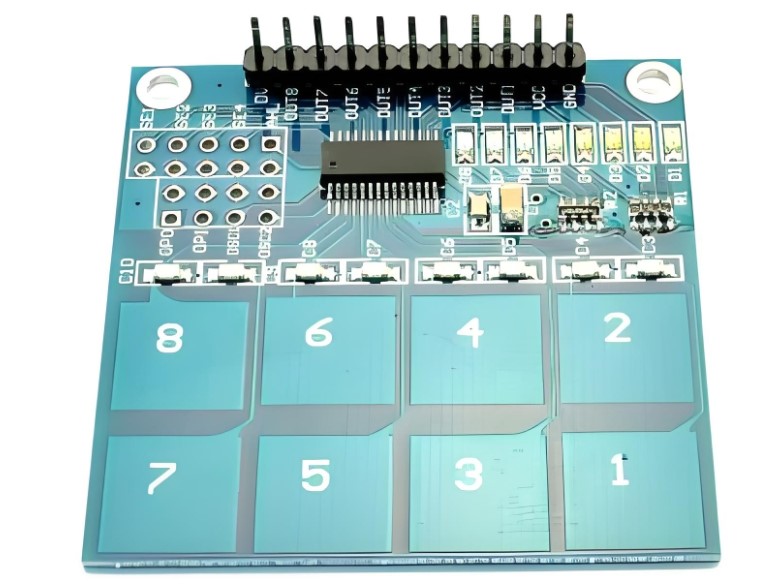The integration of smart home devices into our daily lives has made convenience, efficiency, and control more accessible than ever before. Capacitive sensors, particularly touch-sensitive ones, are playing a crucial role in enhancing the functionality and user experience of these devices. By enabling intuitive interaction with a variety of smart home products, capacitive sensors help create seamless and modern living environments. This article delves into the features, applications, advantages, design highlights, and overall value of touch-sensitive capacitive sensors in the context of smart homes.

User Pain Points in Smart Home Devices
- Complex User Interfaces: Many smart devices come with confusing, cluttered interfaces that make them difficult to operate for users of all ages.
- Limited Customization: Traditional buttons and switches are often rigid and fail to offer personalization, limiting the user’s ability to tailor their smart home experience.
- Durability Issues: Physical buttons and knobs on smart devices can wear out over time, leading to malfunctions and reduced device lifespan.
- Cluttered Aesthetic: Some smart home devices with visible buttons or switches can disrupt the sleek, minimalist design that many homeowners prefer.
Applications of Capacitive Sensors in Smart Homes
- Smart Lighting Control: Capacitive sensors allow users to control lights with a simple touch, enabling dimming or brightness adjustments.
- Smart Thermostats: Users can adjust temperature settings with ease, making home climate control more convenient and intuitive.
- Touch Panels for Home Automation: These sensors are used in central control panels that manage various smart home functions, including security, lighting, and entertainment systems.
- Smart Locks: Touch-sensitive capacitive sensors provide a secure, easy-to-use interface for unlocking doors without physical keys.
- Kitchen Appliances: Modern refrigerators, ovens, and coffee makers are now integrating capacitive touch sensors for streamlined operation.
Product Advantages of Capacitive Sensors
- Intuitive Touch Interaction: Touch-sensitive technology offers a smooth, user-friendly interface, eliminating the need for complex buttons and switches.
- Durability and Longevity: Capacitive sensors are more resistant to wear and tear compared to mechanical buttons, ensuring longer product lifespans.
- Enhanced Aesthetics: Touch-sensitive sensors create sleek, minimalist designs that align with the contemporary look many homeowners desire in their smart devices.
- High Sensitivity: These sensors respond to even the lightest touch, offering a seamless and efficient experience.
- Energy Efficiency: Capacitive sensors often require less power to operate, contributing to energy-efficient devices that align with the growing demand for sustainability.
Unique Design Selling Points
- Seamless Integration: Capacitive sensors can be incorporated into the surfaces of smart home devices without disrupting the overall design.
- Customizable Sensitivity: Modern capacitive touch sensors can be calibrated for varying levels of sensitivity to suit different user preferences.
- Multi-Touch Capability: Many touch-sensitive sensors are designed to recognize multiple touches, enabling complex gestures such as swiping, tapping, and pinching for a more interactive experience.
- Non-Mechanical Construction: As there are no moving parts, capacitive sensors are less prone to damage from repeated use and environmental factors.
- Water and Dust Resistance: Capacitive sensors can be designed to withstand the elements, making them ideal for use in kitchens, bathrooms, or outdoor settings.
Value Delivered by Capacitive Sensors in Smart Homes
- Improved User Experience: By enabling easy touch-based control, capacitive sensors make smart home devices more intuitive and enjoyable to use.
- Aesthetically Pleasing Devices: The sleek, buttonless designs facilitated by capacitive sensors enhance the overall aesthetics of smart home devices, making them more attractive in modern homes.
- Increased Device Longevity: The durability of capacitive sensors means fewer repairs or replacements, saving users money in the long run.
- Customization and Flexibility: These sensors allow users to personalize their smart home devices, providing a level of control that is highly valued in today’s consumer market.
- Future-Proof Technology: As the demand for more sophisticated smart home systems grows, capacitive sensors provide a versatile solution that can be adapted to future innovations and trends.
Conclusion
Touch-sensitive capacitive sensors are revolutionizing the way we interact with smart home devices. By offering intuitive, durable, and aesthetically pleasing solutions, these sensors are enhancing user experiences and transforming ordinary devices into cutting-edge, smart products. As smart home technology continues to evolve, capacitive sensors will remain at the forefront, providing seamless control, customization, and reliability for homeowners seeking modern, efficient, and stylish living environments. The value they bring goes beyond functionality, improving everyday life through ease of use, energy efficiency, and design excellence.
